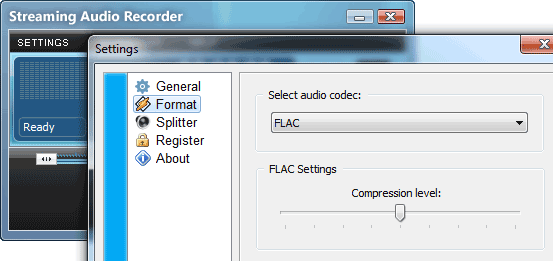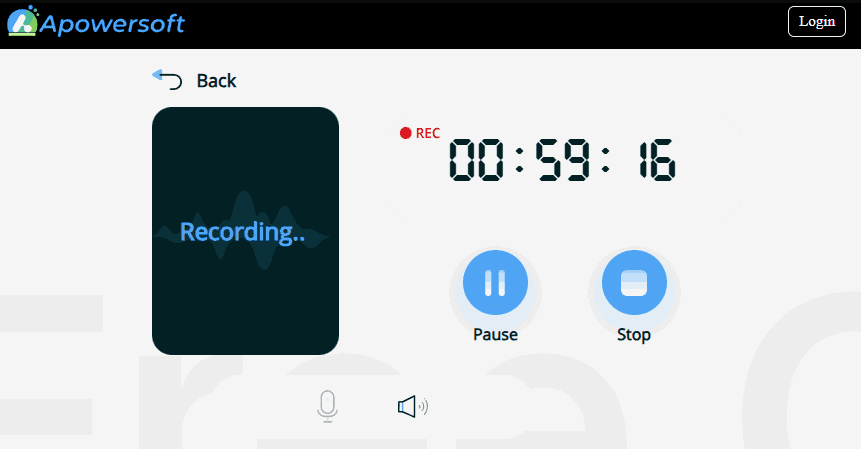
Tidal is a subscription-based streaming service launched in 2014 by Aspiro AB. In just a couple of years it transformed into one of the best streaming music services. At the moment, its main competitor is Spotify. While Spotify offer a wider variety of audio content and free subscription, Tidal focused on audio quality (HiFi option) and exclusive content. Music streaming with Tidal sounded fuller, with warmer tones that give bass a nice little oomph. No doubt, it's really better than sound with CD quality. In comparison, songs streamed on Spotify have crisper highs that sound harsher at loud volumes.
If you’ve ever wanted to record a high-quality version of a track from Tidal, especially one that was marked as Master Quality or previously encoded in MQA, you might be confused. Is it possible now? What changed when Tidal ditched MQA in favor of FLAC? And more importantly, is it possible to record what you’re hearing in a way that preserves detail without breaking any rules?
The short answer is yes, but not through official downloads or third-party scrapers like before. With Tidal’s format change and stricter playback policies, there’s no way to directly save the audio stream. You’ll have to use a recording of the music during playback, just like you would with radio or live performances.
In this guide, we’ll take a look at how Tidal audio works today. You'll learn why people used to chase MQA and how to record your favorite tracks in pure, playable quality using tools like AbyssMedia Streaming Audio Recorder and other secure methods.
1 Understanding Tidal’s Subscription Levels
Tidal offers several tiers of service, but access to high-quality audio is now available at all levels.
The Hi-Fi and Hi-FI Plus plans have been replaced by a plan called “TIDAL”, which includes access to lossless, high-resolution FLAC, and Dolby Atmos content. Tidal has dropped support for MQA, focusing on FLAC and Dolby Atmos for stereo and immersive audio, respectively.
While the move from MQA to FLAC has simplified things for most listeners, some audiophiles miss the “expanded” studio-mastered experience that MQA claims to provide. Still, unless you’re using specialized equipment, the difference between a regular Audio CD and the older MQA format was barely noticeable on most setups.
And no matter what format Tidal uses today, you won't be able to save songs to your library because Tidal officially doesn't allow lossless downloads for public use, but only temporarily caches them for offline playback in its own apps.
2 What is MQA, and why does it matter?
MQA (Master Quality Authenticated) was once marketed as a step up from regular Hi-Fi. It used a special encoding method that “folded” high-resolution data into a smaller container, claiming to preserve the original studio master while keeping file sizes manageable.
There are rumors and debates about whether Tidal MQA actually delivers full master quality or simply upscales lower-resolution sources. Opinions vary, but many users report a noticeable improvement in clarity and depth over standard lossless formats, especially when played on high-end equipment.
In any case, MQA decoding requires special licensing and equipment, which is why Tidal dropped MQA entirely in 2024. The move to lossless FLAC has happened across all subscription tiers, making life easier for most users.
3 Can You Download Tidal Songs Officially?
Officially, Tidal allows limited offline playback in its apps, but not direct file downloads. These cached versions are encrypted and only playable within the app, meaning they won’t work outside of the Tidal ecosystem.
So keeping a permanent, editable version of your favorite tracks for mixing or personal archives simply isn’t an option. Your only option is to record what you hear, like you would from the radio or a live stream.
This is perfectly acceptable under fair use laws in many places — as long as you don’t distribute the files or violate the terms of service.
4 Streaming Audio Recorder – Hi-Res Audio Recording
A convenient solution for recording high-resolution audio can be a product from Abyssmedia called Streaming Audio Recorder. It allows you to capture bit perfect audio from almost any source and save it to our hard drives. It does not matter whether the audio or video track is playing. As long as there is sound, this tool will definitely capture it. Below is a step-by-step guide on how to record music using Streaming Audio Recorder.

- Download and install this app by hitting the "Download" button above.
- After installation, go tho the Settings->Format and select FLAC encoder to save HD audio. The rest of the recording settings will be matched automatically.
- Next is to go to Tidal's app and start audio track that you wish record.
- Come back to Recorder and click the big "Start Recording" button. You will see the timer running on the interface, the file size and recording level.
- Make sure that recording level is ok.
- When you're done, click the "Browse" button to find the songs just recorded. Using recording browser you can edit tags, trim your recordings or send them to iTunes.
Unlike sketchy downloaders, this approach doesn’t violate Tidal’s rules — you're simply recording what you already have access to, much like taping a radio show.
5 Tidal Media Downloader – Once Popular, Now Obsolete
Back when Tidal used proprietary encryption and didn’t support offline playback beyond their app, some third-party tools like Tidal Media Downloader promised direct downloads of songs — often using your subscription key to bypass restrictions.
These tools were widely used — until Tidal updated its security and locked them out. Most stopped working completely after the switch to FLAC and tighter API controls.
Today, even if you find an old downloader online, it’s likely outdated, unstable, or unsafe. And because these programs rely on your login credentials, they pose a risk to account security.
So while these tools were once useful, they’re now unreliable — and not recommended for regular users.
6 Free Online Audio Recorder – Low Quality and Limitations
For those who prefer not to install anything, browser-based tools like Apowersoft Free Online Audio Recorder offer quick solutions.

You just:
- Play the track in your browser.
- Launch the recorder in the tool and select the browser tab from which you want to get the audio.
- Start recording.
- Once finished, download the result.
These services are great for quick use, especially on mobile or public computers. But here's the catch - you can forget about high-quality audio right away, the services save the recording as highly compressed MP3 files. No recording parameters can be configured and the recording process is not visualized in any way. The recording time inside the browser is severely limited, and to extend the limit, you are offered to download and install a regular desktop application.
p.s. Despite the developer's statements, recording failed in Firefox 138.
7 Frequently Asked Questions
Is it legal to record music from Tidal?Yes, as long as you use it for personal use and don’t share or sell the files. Think of it like recording a radio broadcast. It’s legal in many countries for personal use.
Does Tidal still use MQA?No, Tidal moved away from MQA in 2024 in favor of the open FLAC format, making life easier for listeners and eliminating the need for external decoders.
What are the best Tidal alternatives?The best alternatives right now are Qobuz and Apple Music, which offer hi-res audio at up to 24-bit/192kHz. If you lower the requirements and focus on a large selection of songs, then the leaders are Spotify and Deezer.
What’s the best format to record Tidal in?For maximum quality, record FLAC first, then convert to lossy formats if needed. This ensures minimal loss in post-production.
Will Tidal’s recorded files play on my phone or car stereo?Absolutely. Unlike Tidal's own offline files, converted recordings work anywhere, from USB drives to smart speakers.
8 Conclusion
Recording music from Tidal (including Hi-Res tracks) may seem like a daunting task at first, especially after disabling this feature in the official app.
But there are always situations in which you need to have a local copy of a song that are not related to piracy at all. Maybe you are preparing a cover version or just want to use it for karaoke. In this case, handy tools like Streaming Audio Recorder or a browser extension will come to your aid.
Just remember: beware of direct downloaders that use your login details or violate Tidal's rules. Stick to clean and legal recording methods that will not help you enjoy your favorite tracks at any time, even when you are offline.
